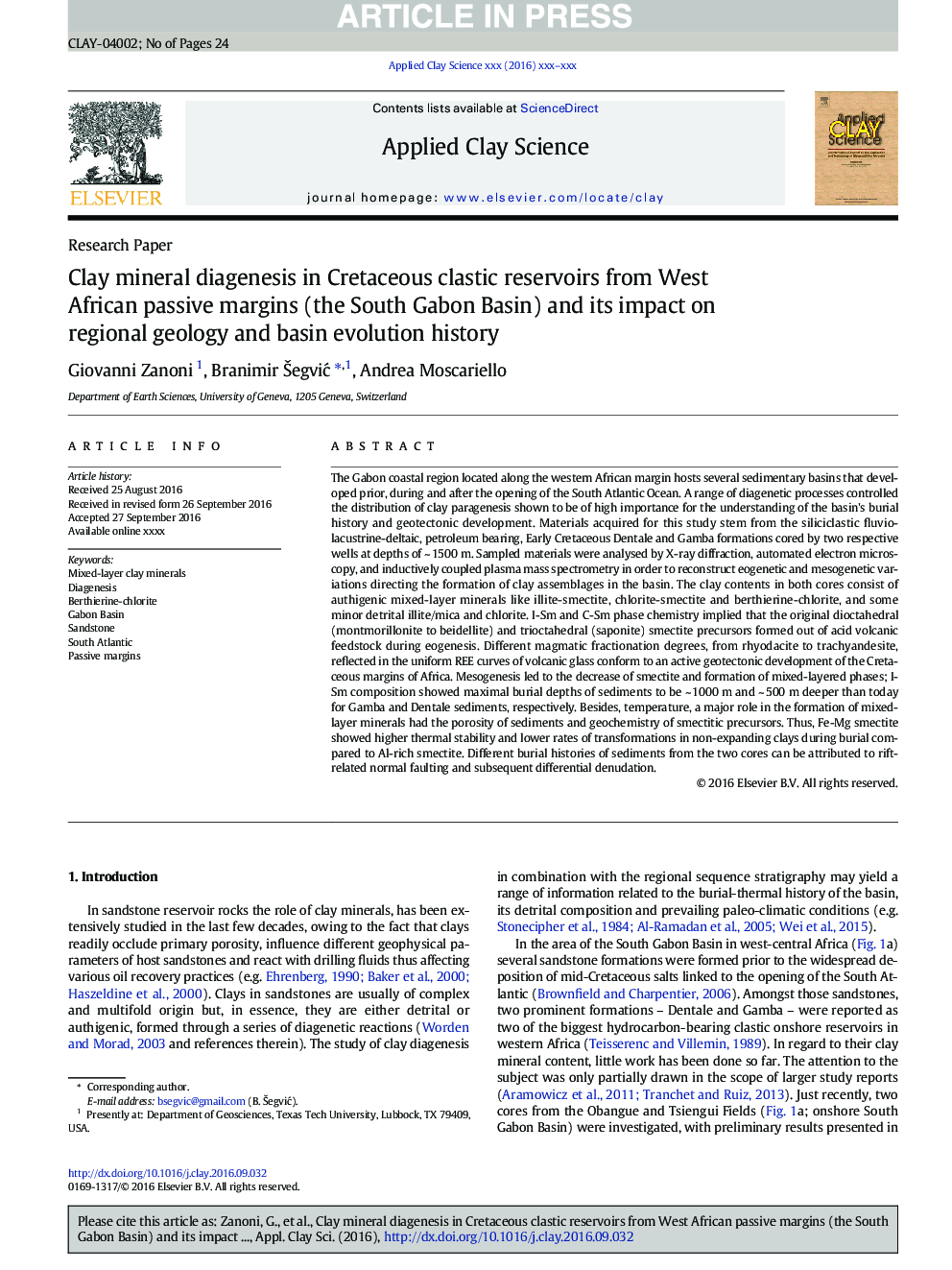| کد مقاله | کد نشریه | سال انتشار | مقاله انگلیسی | نسخه تمام متن |
|---|---|---|---|---|
| 5469080 | 1398986 | 2016 | 24 صفحه PDF | دانلود رایگان |
عنوان انگلیسی مقاله ISI
Clay mineral diagenesis in Cretaceous clastic reservoirs from West African passive margins (the South Gabon Basin) and its impact on regional geology and basin evolution history
ترجمه فارسی عنوان
دیابیزید معدنی خاک رس در مخازن کلاسیک از حاشیه منفعل غرب آفریقا (حوضه جنوبی گابن) و تاثیر آن در تاریخ زمین شناسی منطقه ای و تاریخ تکامل حوضه
دانلود مقاله + سفارش ترجمه
دانلود مقاله ISI انگلیسی
رایگان برای ایرانیان
کلمات کلیدی
مواد معدنی خاک رس مخلوط، تشخیص، بورتریین کلریت، حوضه گابن، ماسه سنگ، اقیانوس اطلس، حاشیه های منفعل،
موضوعات مرتبط
مهندسی و علوم پایه
علوم زمین و سیارات
ژئوشیمی و پترولوژی
چکیده انگلیسی
The Gabon coastal region located along the western African margin hosts several sedimentary basins that developed prior, during and after the opening of the South Atlantic Ocean. A range of diagenetic processes controlled the distribution of clay paragenesis shown to be of high importance for the understanding of the basin's burial history and geotectonic development. Materials acquired for this study stem from the siliciclastic fluvio-lacustrine-deltaic, petroleum bearing, Early Cretaceous Dentale and Gamba formations cored by two respective wells at depths of ~Â 1500Â m. Sampled materials were analysed by X-ray diffraction, automated electron microscopy, and inductively coupled plasma mass spectrometry in order to reconstruct eogenetic and mesogenetic variations directing the formation of clay assemblages in the basin. The clay contents in both cores consist of authigenic mixed-layer minerals like illite-smectite, chlorite-smectite and berthierine-chlorite, and some minor detrital illite/mica and chlorite. I-Sm and C-Sm phase chemistry implied that the original dioctahedral (montmorillonite to beidellite) and trioctahedral (saponite) smectite precursors formed out of acid volcanic feedstock during eogenesis. Different magmatic fractionation degrees, from rhyodacite to trachyandesite, reflected in the uniform REE curves of volcanic glass conform to an active geotectonic development of the Cretaceous margins of Africa. Mesogenesis led to the decrease of smectite and formation of mixed-layered phases; I-Sm composition showed maximal burial depths of sediments to be ~Â 1000Â m and ~Â 500Â m deeper than today for Gamba and Dentale sediments, respectively. Besides, temperature, a major role in the formation of mixed-layer minerals had the porosity of sediments and geochemistry of smectitic precursors. Thus, Fe-Mg smectite showed higher thermal stability and lower rates of transformations in non-expanding clays during burial compared to Al-rich smectite. Different burial histories of sediments from the two cores can be attributed to rift-related normal faulting and subsequent differential denudation.
ناشر
Database: Elsevier - ScienceDirect (ساینس دایرکت)
Journal: Applied Clay Science - Volume 134, Part 3, December 2016, Pages 186-209
Journal: Applied Clay Science - Volume 134, Part 3, December 2016, Pages 186-209
نویسندگان
Giovanni Zanoni, Branimir Å egviÄ, Andrea Moscariello,
